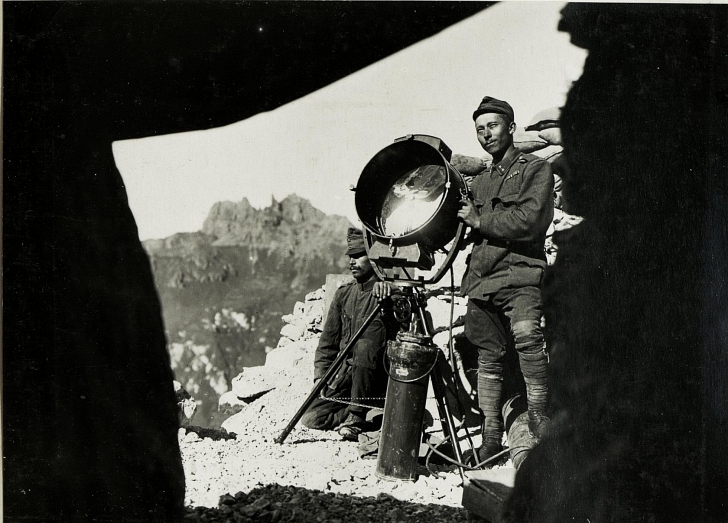Melting Glacier in Italian Alps Leads to Discovery of WWI Bunker
Researchers found evidence of how hard it was to live there.
In many places across Europe remnants of the World Wars are still popping up, sometimes in unlikely places. A vast trove of artifacts from World War I has been recently found in the Italian Alps thanks to melting glacier ice. The equipment and personal belongings were used by Austrian soldiers during what is know as the White War: the battle between Italy and the Austro-Hungarian Empire in the snowiest parts of the region that took place in brutal weather conditions.

The items were found at Mount Scorluzzo, a mass with a peak of 10,154-feet-high. The area is on the border between Italy and what was known then as the Austro-Hungarian Empire. The fighting at such heights and in such cold weather was unlike the trench warfare mired in mud that soldiers stationed in non-mountainous areas faced.
The Austrian soldiers built extensive tunnels, buildings, and lookouts in an attempt to get a stronghold in the area and make their way further into Italy. For the Austrian soldiers stationed in the cramped barracks the struggle was not only to attack the border, but to also stay alive in the devastating -40˚C temperatures.

The artifacts and barracks left behind from the 3 years of fighting were sealed up when the soldiers hastily packed up in 1918. In the 1990s global warming caused glaciers in the area to partially melt, revealing some of the equipment and personal effects from the soldiers who lived and fought there, as well as some bodies frozen in the cold.
Inside the soldiers slept on straw mattresses and wrote postcards home by lantern light. The men lived largely on tinned food, although with some meat desperately needed in an environment where a person uses many more calories than normal just to stay alive. Stefano Morosini, coordinator of heritage projects at Stelvio National Park in Italy,
called the barracks a “sort of time machine” since no one had been there since 1918.

Between 2015 and 2017 even more of the ice began to melt, allowing researchers to enter the defunct barracks. Inside researchers were able to uncover even more about the soldiers’ time there. More recent finds have included some heartbreaking discoveries, such as animal bones with the marrow completely sucked from them. The conditions at this camp where Austrian soldiers fought were stationed were harsh and unbending.
Rapidly melting ice in the #ItalianAlps exposes the base camp where 20 men from the Austro-Hungarian army were stationed for three years during the White War – a battle that took place across treacherous and bitterly cold Alpine terrain during #WWI. https://t.co/5wCLiTiDlk pic.twitter.com/TJil6dNONd
— The Archaeological Conservancy (@tac_org) May 7, 2021
In all there have been hundreds of artifacts uncovered. The items from the barracks are set to be put on display in a new museum in the town of Bormio by 2022, showing what life was like for the soldiers who fought in the White War.
SKM: below-content placeholderWhizzco for DOT

